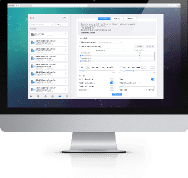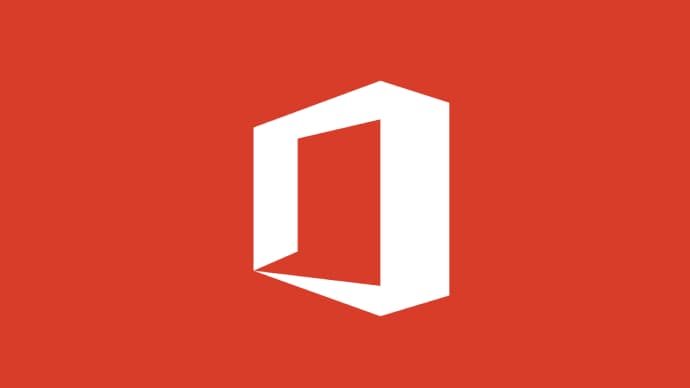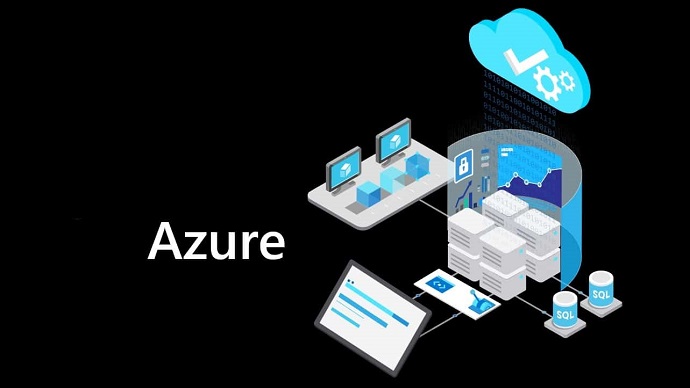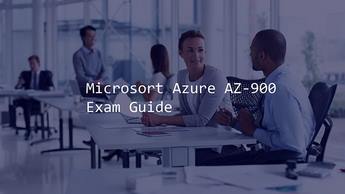Use VCE Exam Simulator to open VCE files

OGEA-101 The Open Group Practice Test Questions and Exam Dumps
Question 1:
Which statement about Requirements Management is most correct?
A. Requirements Management and stakeholder engagement are placed at the center of architecture development.
B. Stakeholder requirements are captured once in Phase A and managed throughout the ADM cycle.
C. Requirements Management is a step of all ADM Phases.
D. The purpose of Requirements Management is to process change requests.
Answer: C
Explanation:
In the TOGAF (The Open Group Architecture Framework) Architecture Development Method (ADM), Requirements Management is a central, ongoing activity that interacts with every phase of the ADM. Its role is not confined to a single step, nor is it limited to the beginning or end of the process. Instead, it is a continuous process that ensures requirements are identified, stored, assessed, and tracked throughout the ADM cycle.
Let's analyze each option in detail to determine why C is the most correct statement.
A. Requirements Management and stakeholder engagement are placed at the center of architecture development.
While it's true that both stakeholder engagement and Requirements Management are crucial to architecture development, this statement is overly broad and not technically precise. TOGAF places Requirements Management at the center of the ADM diagram to represent its continuous interaction with every phase, but it does not place stakeholder engagement at the center in the same way. Thus, the inclusion of stakeholder engagement makes this statement less accurate than option C.
B. Stakeholder requirements are captured once in Phase A and managed throughout the ADM cycle.
This statement is incorrect. Although Phase A (Architecture Vision) is where many initial stakeholder requirements are gathered, requirements are not only captured once. New requirements may emerge throughout later phases, especially as more detail is added during Business, Information Systems, and Technology Architecture phases. TOGAF emphasizes that requirements evolve and are updated, refined, or removed as necessary during the ADM cycle. Therefore, the claim that they are "captured once" is misleading.
C. Requirements Management is a step of all ADM Phases.
This is the most correct answer. Requirements Management in TOGAF is not a one-time activity. Instead, it is integrated into every phase of the ADM. It ensures that requirements are tracked, assessed, and maintained as the architecture evolves. The Requirements Management phase operates in parallel with the other ADM phases and facilitates the incorporation of changing business needs, new insights, and stakeholder feedback. This ensures that the architecture remains aligned with business goals throughout the development lifecycle.
D. The purpose of Requirements Management is to process change requests.
This statement is partially correct, but it is too narrow in scope to be considered the best answer. While one of the responsibilities of Requirements Management is to handle change requests, its purpose is much broader. It includes capturing, analyzing, validating, prioritizing, and tracking requirements throughout the ADM cycle. Processing change requests is just one aspect of this larger process. Hence, this option is less complete than option C.
In conclusion, Requirements Management is a continuous activity that intersects with every phase of the ADM and ensures that the architecture being developed stays aligned with business objectives and stakeholder needs throughout its evolution.
The correct answer is C.
Question 2:
What is the most accurate description of the type of information found in the Reference Library section of the Architecture Repository?
A. A record of the governance activity across the enterprise
B. Processes to support governance of the Architecture Repository
C. Specifications to which architectures must conform
D. Guidelines and templates used to create new architectures
Answer: D – Guidelines and templates used to create new architectures
Explanation:
The Architecture Repository is a key concept in TOGAF (The Open Group Architecture Framework), serving as a structured set of resources and information that support the development, governance, and management of an enterprise architecture. It organizes architectural information into several distinct classes or components. One of these components is known as the Reference Library, and understanding its purpose is essential for effectively leveraging the Architecture Repository.
The Reference Library is a curated collection of guidelines, templates, patterns, and reference materials that architects can use to support the creation and implementation of architecture across the enterprise. It serves as a toolbox that helps ensure consistency, reuse, and adherence to best practices when developing architectural deliverables.
Let’s examine each of the answer choices in light of TOGAF’s definitions:
A. A record of the governance activity across the enterprise – This is incorrect. This type of information belongs in the Governance Log, which is a separate component of the Architecture Repository. The Governance Log tracks approvals, waivers, compliance assessments, and other governance-related activities. It does not serve the same function as the Reference Library.
B. Processes to support governance of the Architecture Repository – This is also incorrect. These processes are typically part of the Architecture Capability area or described within Architecture Governance processes. They are not housed in the Reference Library, which is not focused on governance processes but rather on tools and reusable assets for architecture creation.
C. Specifications to which architectures must conform – This choice refers to Standards Information Base (SIB), another component of the Architecture Repository. The SIB is the correct place for mandatory standards, compliance guidelines, and specifications. These are critical for ensuring architectural compliance, but they are not part of the Reference Library.
D. Guidelines and templates used to create new architectures – This is the correct answer. The Reference Library contains generic resources such as templates, best practice guides, architecture patterns, and reference models. These resources help architects standardize and accelerate the development process by providing predefined materials that can be adapted to specific needs. The Reference Library is all about reusability and support for architecture development, not enforcement of rules or logging activities.
To clarify further, here is a breakdown of the key components of the Architecture Repository:
Reference Library: Reusable guidelines, patterns, and templates
Standards Information Base: Compliance requirements and standards
Governance Log: Records of governance actions and approvals
Architecture Metamodel: Framework describing the types and relationships of architecture artifacts
Architecture Landscape: Current and planned architectural state information
Architecture Capability: Resources, tools, and processes supporting architecture governance and development
By using the Reference Library, enterprise architects can ensure that they are not reinventing the wheel with each new project. Instead, they leverage proven practices and documentation, which leads to faster development cycles and more consistent architectures.
Therefore, the correct answer is D – Guidelines and templates used to create new architectures.
Question 3:
Which of the following describes how the Enterprise Continuum is used when developing an enterprise architecture?
A. To describe how an architecture addresses stakeholder concerns
B. To classify architecture and solution assets
C. To identify and understand business requirements
D. To coordinate with the other management frameworks in use
Answer: B
Explanation:
The Enterprise Continuum is a key concept in the TOGAF framework that provides a structured way to classify architecture and solution artifacts. It acts as a virtual repository or framework that helps enterprise architects manage the relationships among different types of architectural models, patterns, and solutions, whether these are generic, industry-specific, or organization-specific.
Let’s examine each option carefully to understand why B is the most accurate:
A. To describe how an architecture addresses stakeholder concerns
This is not the primary role of the Enterprise Continuum. Addressing stakeholder concerns is a task better associated with tools like the Architecture Views and Viewpoints defined in the TOGAF content framework and ISO/IEC 42010. While the Enterprise Continuum may contain artifacts that are used to create views for stakeholders, its main purpose is not directly about stakeholder concerns. Therefore, this option is incorrect.
B. To classify architecture and solution assets
This is the correct answer. The Enterprise Continuum provides a classification scheme for a wide range of architecture and solution artifacts that are relevant at different levels of abstraction—from Foundation Architectures (like TOGAF itself) and Common Systems Architectures, to Industry Architectures, and finally to Organization-Specific Architectures. These are further divided into the Architecture Continuum and Solutions Continuum, which together help architects identify, reuse, and adapt existing assets appropriately during architecture development. This classification supports interoperability, standardization, and reuse—key principles in enterprise architecture.
C. To identify and understand business requirements
Understanding business requirements is a critical part of developing enterprise architecture, but this is primarily handled during Phase A (Architecture Vision) and other early ADM phases such as Preliminary Phase and Business Architecture (Phase B). The Enterprise Continuum is not focused on requirements elicitation or analysis. Rather, it helps organize and retrieve architectural artifacts once the need for them has been identified.
D. To coordinate with the other management frameworks in use
TOGAF does emphasize the need to align with and integrate other frameworks (like ITIL, COBIT, or PRINCE2), especially in the Preliminary Phase. However, this coordination is not the responsibility of the Enterprise Continuum. That task falls more under governance models, organizational alignment processes, and integration strategies. The Enterprise Continuum is more concerned with the classification and evolution of architectural content.
In summary, the Enterprise Continuum is primarily a tool for classifying architecture and solution assets, helping organizations track the maturity and abstraction of their architectural models. It facilitates the reuse of architecture components and provides a context for interpreting and using architecture artifacts from internal and external sources.
The correct answer is B.
Question 4:
What mechanism is used to organize architectural information in a structured manner to ensure it can be analyzed and used effectively to address stakeholder concerns?
A. An EA Library
B. A Content Metamodel
C. A Stakeholder Map
D. An Architecture Framework
Answer: B – A Content Metamodel
Explanation:
In enterprise architecture, particularly within the TOGAF (The Open Group Architecture Framework) methodology, organizing architectural content in a consistent, structured way is essential for ensuring that stakeholders can understand, assess, and make informed decisions based on architectural artifacts. The Content Metamodel plays a central role in achieving this objective.
The Content Metamodel provides a formal structure for defining the types of architecture artifacts, their attributes, and the relationships between them. It enables architects to create architectural models and documentation that are standardized, traceable, and comprehensive. By doing so, it ensures that different stakeholders — whether they are business managers, IT leaders, or external partners — can access relevant, coherent architectural information that aligns with their specific interests and concerns.
Let’s now examine the other options and clarify why they are incorrect:
A. EA Library – This term is sometimes loosely used to refer to a collection of architecture documents, models, or reference materials. However, it is not a formal TOGAF term, and it does not inherently structure information. An EA Library is more about storage or categorization than structuring content relationships and models. It lacks the rigor and formalism needed to meet stakeholder analysis requirements.
C. Stakeholder Map – This is a tool used to identify and categorize stakeholders based on their interests, influence, and relationship to the architecture effort. While a stakeholder map helps understand who the stakeholders are and what their concerns may be, it does not provide a structured framework for organizing architectural content. It is primarily used during stakeholder analysis in the preliminary phase of architecture development.
D. Architecture Framework – While this is broader and encompasses the overall structure and method for developing architectures (including processes, principles, and views), it is not the specific mechanism for organizing content artifacts. TOGAF itself is an architecture framework, and within it, the Content Metamodel provides the precise tool for structuring information. The framework tells how to build architectures; the metamodel tells what components and relationships should be used in the architecture content.
The Content Metamodel is typically represented as a diagram or schema that includes elements such as:
Business services, processes, actors
Application components and data entities
Infrastructure components
Information flows and relationships between components
Each element in the metamodel helps ensure that architecture artifacts are well-defined, consistent, and interconnected, allowing for better communication, governance, and stakeholder alignment. It also supports the use of architecture tools that rely on model-driven representations, such as ArchiMate or UML-based systems.
In summary, the Content Metamodel is the definitive structure within TOGAF used to classify, relate, and manage architecture content. It ensures that all architecture deliverables are logically consistent and aligned to stakeholder needs.
Therefore, the correct answer is B – A Content Metamodel.
Question 5:
Which of the following is a responsibility of an Architecture Board?
A. Conducting assessments of the maturity level of architecture discipline within the organization
B. Creating the Statement of Architecture Work
C. Allocating resources for architecture projects
D. Establishing targets for re-use of components
Answer: D
Explanation:
The Architecture Board in TOGAF is a governance body that plays a central role in ensuring the integrity, consistency, and alignment of architecture development with enterprise goals. It is responsible for overseeing architecture-related activities and decisions across the organization, enforcing principles, and promoting best practices such as reuse of architecture assets. Among its many responsibilities, establishing targets for the re-use of components is a clear and defined function.
Let’s examine each option to identify the most accurate one:
A. Conducting assessments of the maturity level of architecture discipline within the organization
While understanding and improving architectural maturity is important, it is not typically the direct responsibility of the Architecture Board. This activity is generally conducted as part of enterprise capability assessments or continuous improvement efforts, possibly by architecture teams, PMOs (Project Management Offices), or external consultants. The board may review or use the results of such assessments, but it does not conduct them.
B. Creating the Statement of Architecture Work
The Statement of Architecture Work is typically produced during the Architecture Vision phase (Phase A) of the ADM cycle. It is developed by the architecture team in consultation with stakeholders to define the scope, objectives, and deliverables of the architecture effort. The Architecture Board may review and approve the Statement of Architecture Work, but it does not create it. Hence, this is not its responsibility.
C. Allocating resources for architecture projects
Allocating resources—such as staff, funding, and infrastructure—is typically a responsibility of senior management or project sponsors, not the Architecture Board. The board may provide recommendations, prioritize initiatives, or assess feasibility, but resource allocation decisions lie outside its core duties.
D. Establishing targets for re-use of components
This is the correct answer. One of the core governance responsibilities of the Architecture Board is to promote reusability of architectural components such as models, patterns, templates, and solution building blocks. By setting targets for reuse, the board helps reduce redundancy, accelerate solution development, and ensure consistency across different projects and business units. This aligns with TOGAF's emphasis on creating a repository of reusable assets and integrating them through tools like the Enterprise Continuum and the Architecture Repository.
In practice, these targets can guide project teams toward using existing architectural solutions before creating new ones, which contributes to cost efficiency, standardization, and improved architectural maturity over time.
To summarize, among the given choices, the responsibility that best aligns with the function of an Architecture Board in TOGAF is establishing goals and targets related to reuse of architecture components to ensure architectural coherence and efficient solution delivery.
The correct answer is D.
Question 6:
What is the main purpose of Architecture Principles within an enterprise architecture framework?
A. To establish a common understanding of how to control the business in pursuit of strategic objectives
B. To describe likely impacts resulting from successful deployment of the target architecture
C. To form a contract between sponsoring organization and the enterprise architects
D. To provide a better understanding about the enterprise’s culture and values
Answer: A – To establish a common understanding of how to control the business in pursuit of strategic objectives
Explanation:
Architecture Principles are a cornerstone of enterprise architecture, particularly in frameworks like TOGAF (The Open Group Architecture Framework). These principles are high-level statements of intent that guide the development and implementation of architectures within an organization. They are essential for aligning architecture work with business strategy, establishing boundaries, and providing direction for decision-making.
The primary purpose of architecture principles is to establish a common understanding across the organization about how business and IT decisions should be made in alignment with strategic goals. This shared understanding ensures that all architectural efforts — from choosing technologies to designing processes — are grounded in a consistent, agreed-upon set of values and priorities. Therefore, A is the correct answer.
Let’s examine each of the options in detail:
A. To establish a common understanding of how to control the business in pursuit of strategic objectives – This is correct. Architecture principles help define how the business will use its architecture to achieve its strategic goals. They guide governance, planning, decision-making, and design at both business and IT levels. Examples include principles like “Data is an asset,” “Technology independence,” or “Reusability is preferred.” These principles ensure that everyone involved in architectural work shares a clear, strategic foundation.
B. To describe likely impacts resulting from successful deployment of the target architecture – This is incorrect. This kind of information is typically included in architecture vision documents, transition architectures, or impact assessments, not in the principles. Architecture principles are not descriptive or predictive; they are prescriptive, defining what should guide architecture, not what will result from it.
C. To form a contract between sponsoring organization and the enterprise architects – This is also incorrect. While architecture principles do establish a foundation for governance and compliance, they are not formal contracts. Governance mechanisms and architecture charters might define the responsibilities and agreements between stakeholders and architects, but principles are more about philosophy and guidance, not legal or contractual obligations.
D. To provide a better understanding about the enterprise’s culture and values – This is partially true but not the purpose of architecture principles. Enterprise culture and values might influence the content of architecture principles, but the purpose of the principles themselves is not to explore or document culture. That kind of analysis would be more appropriate in organizational assessments or business capability models.
A well-developed set of architecture principles typically includes:
Name: A concise label (e.g., “Service Reusability”)
Statement: A clear and unambiguous rule
Rationale: Why the principle is important
Implications: What the principle means for future decision-making and implementation
These elements ensure that the principles are understandable, actionable, and enforceable within the architecture governance process. When applied consistently, they help avoid misaligned decisions, reduce redundancy, and keep architecture development in line with long-term strategic goals.
Thus, the correct answer is A – To establish a common understanding of how to control the business in pursuit of strategic objectives.
Question 7:
Which of the following does the TOGAF standard describe as a package of functionality defined to meet business needs across an organization?
A. A deliverable
B. An application
C. A solution architecture
D. A building block
Answer: D
Explanation:
In the TOGAF framework, a building block is defined as a reusable, modular package of functionality that helps meet business needs across an organization. Building blocks are central to how TOGAF structures architectural solutions, providing a way to develop, describe, and reuse components that can be assembled into more complex architectures.
Let’s examine each option to clarify why D is the most appropriate:
A. A deliverable
In TOGAF, a deliverable is a specific work product that is contractually specified and formally reviewed, approved, and signed off by stakeholders. Examples include architecture vision documents, requirements specifications, and architectural definitions. Deliverables are outputs of architecture processes rather than functional packages. Therefore, although important, they are not the entities that represent "a package of functionality to meet business needs."
B. An application
An application refers to a software system designed to support specific business functions or processes. While applications can meet business needs and contain functionality, they are typically more granular and technical. They are also usually part of an architecture, rather than being the architecture itself. In TOGAF terminology, an application would likely be an example of an application building block, not a general classification of functionality across the enterprise.
C. A solution architecture
A solution architecture is a detailed description of a solution used to meet a specific business requirement. It may include multiple building blocks, deliverables, and technologies. However, it is not itself a "package of functionality" but rather a design or plan that incorporates such packages. In other words, solution architecture describes how building blocks are assembled and deployed, not the building blocks themselves.
D. A building block
This is the correct answer. According to TOGAF, a building block is a package of functionality that is intended to fulfill business requirements and can be reused in multiple contexts. There are two types:
Architecture Building Blocks (ABBs): These are high-level definitions that capture the functionality required.
Solution Building Blocks (SBBs): These are implementations of ABBs and represent real-world solutions such as software or infrastructure components.
Building blocks are fundamental to TOGAF’s component-based and modular approach to enterprise architecture. They promote reusability, consistency, and easier integration across business units and IT systems.
To sum up, building blocks are the conceptual and functional units that TOGAF uses to construct architectures. They can represent anything from business capabilities to applications and infrastructure components, as long as they encapsulate functionality intended to serve organizational needs. This makes them the most appropriate answer to the question.
The correct answer is D.
Question 8:
Complete the sentence: The TOGAF standard covers the development of four architecture domains — Business, Data, Technology, and ______________________.
A. Application
B. Transition
C. Segment
D. Capability
Answer: A – Application
Explanation:
The TOGAF (The Open Group Architecture Framework) standard is a comprehensive approach for designing, planning, implementing, and governing enterprise information architecture. One of the fundamental concepts in TOGAF is the division of the architecture into four domains, each focusing on a different perspective of the enterprise architecture.
These four domains are:
Business Architecture – This domain defines the business strategy, governance, organization, and key business processes. It provides the foundation for aligning IT with business goals and helps stakeholders understand how the organization delivers value.
Application Architecture – This domain describes the individual application systems to be deployed, their interactions, and their relationships to the core business processes of the organization. It ensures that the applications support the business requirements and are aligned with the overall enterprise goals.
Data Architecture – This defines the structure of an organization’s logical and physical data assets and data management resources. It includes models for how data is stored, managed, and accessed across the enterprise.
Technology Architecture – Also known as the technical architecture, this describes the hardware, software, and network infrastructure needed to support the deployment of mission-critical applications. It includes computing nodes, middleware, operating systems, and communications protocols.
With this framework, the correct word to complete the sentence — “The TOGAF standard covers the development of four architecture domains: Business, Data, Technology, and __________________” — is clearly Application. Therefore, A is the correct answer.
Now, let’s briefly analyze the incorrect choices:
B. Transition – While TOGAF does address Transition Architectures as part of the Architecture Development Method (ADM), it is not considered one of the four core architecture domains. Transition Architectures define intermediate states of the architecture during a migration or transformation but are not one of the foundational domains.
C. Segment – A Segment Architecture refers to a detailed architecture within a specific portion or segment of the enterprise, often aligned to a particular organizational unit or business function. Again, it is a type or scope of architecture, not one of the four domains.
D. Capability – TOGAF does incorporate the concept of Capabilities when developing Capability-Based Planning and within the Architecture Capability Framework, but this is also not one of the four core architecture domains. Capabilities are used to understand what an enterprise can do and to guide strategic transformation, but they do not replace or define an architecture domain.
In conclusion, the four architecture domains that TOGAF formally defines are Business, Application, Data, and Technology. These domains help structure and guide enterprise architecture activities in a holistic and organized manner, ensuring that every key area of the enterprise is addressed during architecture development.
Therefore, the correct answer is A – Application.
Question 9:
Complete the sentence. When considering agile development, Architecture to Support Project will identify what products the Enterprise needs, the boundary of the products, and what constraints a product owner has; this defines the Enterprise’s _________.
A. workflow management
B. lifecycle economics
C. backlog
D. operations
Answer: C
Explanation:
This question touches on the integration of enterprise architecture with agile development principles, specifically how TOGAF (or other architecture frameworks) align with agile concepts such as the product backlog.
The sentence describes a scenario where enterprise architecture helps clarify what products are needed by the business, defines the boundaries of those products, and outlines any constraints that product owners must consider. This strategic insight directly contributes to the definition of the enterprise's backlog, particularly in an agile environment.
Let’s analyze each option:
A. Workflow management
Workflow management deals with the coordination and automation of business processes. While it may help define how tasks flow between systems or departments, it does not represent a prioritized list of work to be completed, which is what the sentence is about. Therefore, this term does not accurately complete the sentence.
B. Lifecycle economics
Lifecycle economics refers to understanding and managing the costs and value of systems or products throughout their entire lifecycle—from conception through development, deployment, maintenance, and retirement. This concept is useful for long-term planning and budgeting but is not directly related to agile development backlogs or the immediate scope of project/product development planning. So this choice is inappropriate for completing the sentence.
C. Backlog
This is the correct answer. In agile development, a backlog is a dynamic list of work items or product requirements that need to be addressed. The backlog evolves over time as the product grows and as business priorities shift. The enterprise architecture function, when supporting agile projects, contributes to defining and refining this backlog by identifying the required products, their boundaries, and any architectural or organizational constraints.
By informing the enterprise’s backlog, architecture helps ensure that the development teams are aligned with strategic goals and that the products being developed are sustainable, scalable, and compliant with enterprise standards. The backlog becomes the bridge between strategic architecture and operational agile execution.
D. Operations
Operations refer to the ongoing activities that keep IT services and infrastructure running. While architectural decisions may influence operational practices, this term doesn’t fit with the agile development context of defining products, constraints, and planning work items. Operations focus on stability and maintenance, not the planning of upcoming development work.
To summarize, in an agile context, the backlog is the primary planning artifact that reflects what needs to be done to deliver value to the enterprise. Architecture plays a key role in shaping the backlog to ensure it aligns with the enterprise's strategic direction, complies with constraints, and is logically structured. That makes "backlog" the most appropriate completion of the sentence.
The correct answer is C.
Question 10:
Which of the following best describes the purpose of the Gap Analysis technique?
A. To govern the architecture throughout its implementation process
B. To develop a set of general rules and guidelines for the architecture
C. To allocate resources for architecture projects
D. To identify items omitted from the Target Architecture
Answer: D – To identify items omitted from the Target Architecture
Explanation:
In the context of enterprise architecture, Gap Analysis is a technique used to compare the current state (also known as the "As-Is" architecture) with the desired future state (the "To-Be" or Target Architecture). The purpose of Gap Analysis is to identify the differences, or gaps, between these two states and determine what is required to bridge those gaps. This can include identifying missing components, additional capabilities, or resources needed to achieve the target architecture.
By performing Gap Analysis, architects and stakeholders can systematically identify and understand where their current architecture is insufficient or misaligned with business goals, technology advancements, or strategic objectives. It helps define the roadmap for transitioning from the current architecture to the future one, ensuring that all necessary elements are addressed during the implementation process.
Now, let’s break down each option:
A. To govern the architecture throughout its implementation process – This is incorrect. While governance is essential for ensuring that architectural decisions align with business objectives and stay on track, Gap Analysis is not a governance tool. It is focused on identifying and addressing the differences between the current and target architectures, not on overseeing the implementation.
B. To develop a set of general rules and guidelines for the architecture – This is also incorrect. Developing rules and guidelines typically falls under the Architecture Principles or standards documentation. Gap Analysis does not focus on creating rules but rather on analyzing where the current architecture needs to change or improve to meet the target state.
C. To allocate resources for architecture projects – This is incorrect as well. Gap Analysis is more concerned with understanding the differences between the current and desired architectures, not about allocating resources (e.g., funding, people, technology). Resource allocation is typically handled in the project management or Architecture Capability domain.
D. To identify items omitted from the Target Architecture – This is correct. The primary goal of Gap Analysis is to identify the missing elements or gaps that exist between the current and future architecture. It highlights what is needed in the Target Architecture that has been omitted or is lacking, ensuring that the desired future state is clearly defined and achievable.
To clarify, Gap Analysis can identify a variety of gaps, such as:
Technological gaps: Missing technologies, platforms, or infrastructure
Process gaps: Business processes that are not supported by the current architecture
Data gaps: Incomplete or inconsistent data models
Capability gaps: Organizational or technical capabilities that need to be developed
Once the gaps are identified, the next steps involve developing strategies to close these gaps, including detailed planning, resource allocation, and architectural adjustments.
In conclusion, the primary purpose of Gap Analysis is to help identify the differences between the current architecture and the target architecture, particularly focusing on items that are missing or omitted in the target design.
Therefore, the correct answer is D – To identify items omitted from the Target Architecture.
Related Exams

Top Training Courses











SPECIAL OFFER: GET 10% OFF
This is ONE TIME OFFER

A confirmation link will be sent to this email address to verify your login. *We value your privacy. We will not rent or sell your email address.
Download Free Demo of VCE Exam Simulator
Experience Avanset VCE Exam Simulator for yourself.
Simply submit your e-mail address below to get started with our interactive software demo of your free trial.